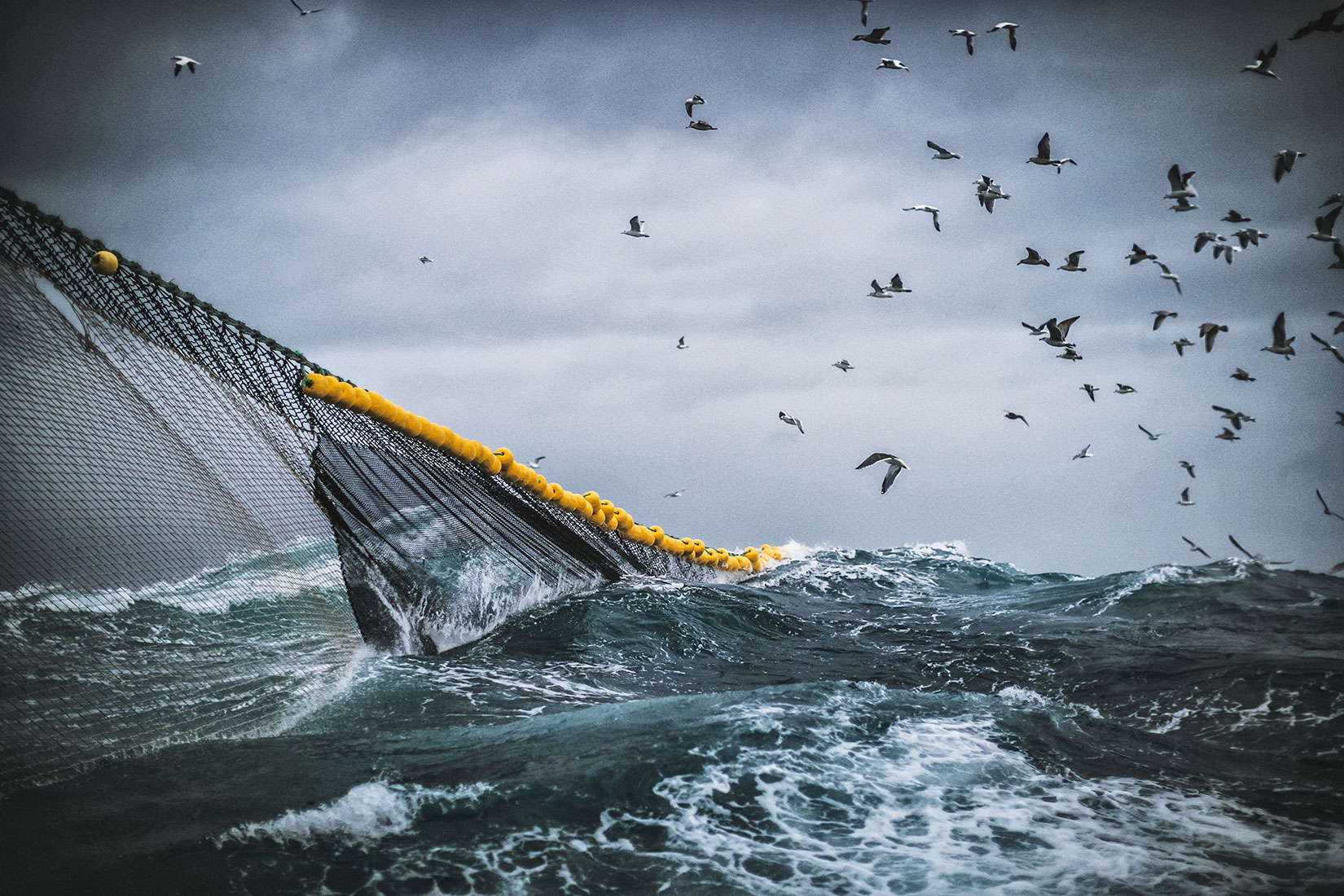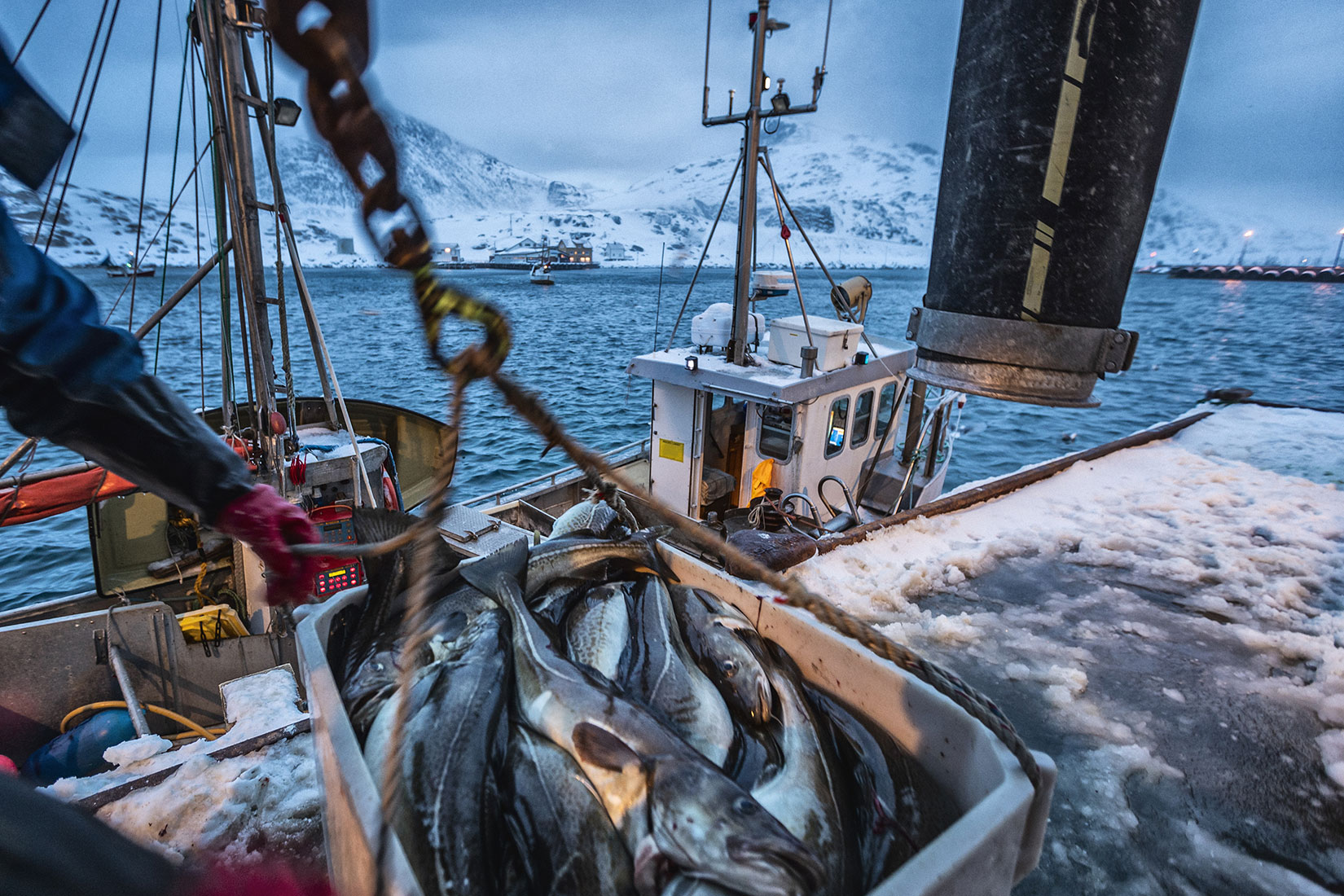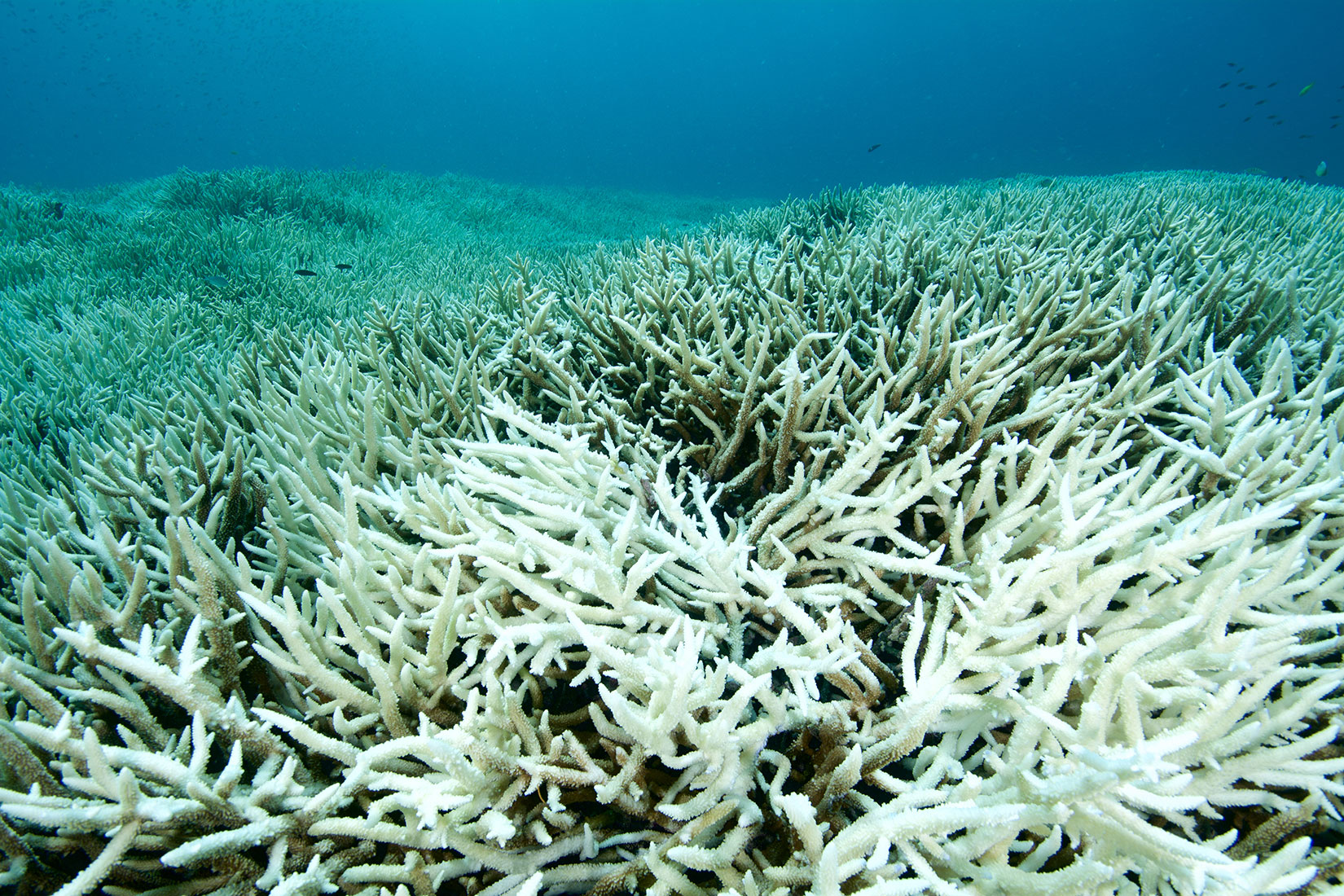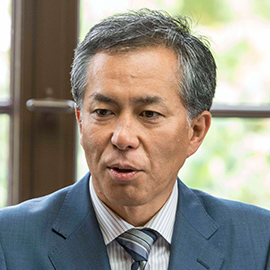Chinese fishing vessels in the Sea of Japan have become a major threat. In 2018, Fisheries Agency patrol vessels ordered North Korean and Chinese fishing boats to leave Japan’s Exclusive Economic Zone (EEZ) in the Sea of Japan -- especially the squid- and crab-rich waters around an area called the Yamato Bank -- 5,201 times and 114 times respectively (5,315 times in total)[1]. In 2019, 4,007 such orders were issued to North Korean vessels and 1,115 to Chinese ones (5,122 in total)[2]. By the end of September 2020, however, a total of 2,587 orders had been issued -- 2,586 to Chinese vessels, and just one to a North Korean ship[3]. This trend is attributed to more North Korean fishermen halting operations to avoid spreading the new coronavirus[4] and to a growing number of Chinese operators who have acquired fishing rights from their North Korean counterparts[5].
There is also an issue between North Korea and Japan around the Yamato Bank. In October 2019, a North Korean fishing boat collided with a Japanese Fisheries Agency patrol vessel that had warned the ship to leave. The collision resulted in the North Korean boat sinking. The fishermen were all rescued by the Fisheries Agency vessel, a Japan Coast Guard patrol ship that rushed to the scene, and another nearby vessel, but issues regarding obstruction of the official duties of fisheries control and responsibility for the collision remain[6]. Moreover, on September 29, 2020, a government ship that was believed to be operated by the North Korean government was seen in the western waters of the Yamato Bank. It was not behaving dangerously, but its objective remains unclear[7].
With more Chinese vessels in the area, there are concerns about fishery resource depletion in the Sea of Japan. Uncontrolled activity by Chinese fishing vessels in the South China Sea is also seen as a problem by neighboring countries. However, Chinese fishing activity that ignores resource conservation is not limited to Asia. Just recently as many as 260 Chinese fishing vessels gathered off the Galapagos Islands in Ecuador to engage in large-scale shark-hunting[8]. The action raised concerns about the ecosystem there and resource protections.
In the Sea of Japan, Japanese vessels are restricted by tonnage and in what fishing methods they can use. These regulations help enable sustainable resource management. The much larger Chinese vessels, however, are not bound by regulations, and they use a method called “pair trawling,” which can lead to overfishing and resource depletion. These Chinese fishing vessels have become a new threat in the Sea of Japan. This article, therefore, argues that China must be urged to take a responsible attitude toward its fishing vessels in the Sea of Japan to protect the area’s resources and to restore order in the fishing industry. Additionally, Japan’s system of law enforcement and coordination among relevant organizations should be further strengthened.

The legal system for fisheries in the Sea of Japan
The boundaries of the EEZs of Japan, South Korea, North Korea and Russia in the Sea of Japan are not yet settled. An EEZ is a vast area of sea that extends 200 nautical miles from a coastal state’s baseline. Freedom of navigation is applied within these waters, but natural resources there, such as fishery resources, are subject to the sovereign rights of the coastal state. Japan defines its EEZ as 200 nautical miles from its baseline, or the midline between Japan and countries on the opposite shore[9]. North Korea[10] has declared only the 50-nautical mile Military Boundary Zone[11], and it has not established its baseline to determine its EEZ[12]. Because of Japan’s territorial disputes with South Korea over Takeshima and with Russia over the Northern Territories, parts of its EEZ in the Sea of Japan remain unsettled[13].
The management of fishery resources in areas where EEZs are unresolved is mainly based on bilateral agreements[14]. For example, in the western part of the Sea of Japan, a new Japan-South Korea fisheries reflecting the EEZ regime in the UNCLOS was concluded in 1998[15]. It established “provisional measures zones” in the waters where EEZ claims overlap. The agreement provides both sides shall cooperate in the protection, management and optimal use of fishery resources, and that the two countries conduct law enforcement operations only against their own flagged vessels. In addition, in the areas of the EEZs other than the provisional measures zone, "reciprocal measures" are taken where fishing vessels of the other party are allowed to fish after mutually determining the fish species, catch allocation, and operating areas[16]. China and Japan have concluded a similar agreement that sets out provisional measures zones and reciprocal measures zones, but the provisional measures zones are established only in the East China Sea and not in the Sea of Japan. At one point there was an unofficial civilian fisheries agreement between Japan and North Korea, but it expired in 1982.
Japan’s “Act on the Exercise of the Sovereign Right for Fishery, etc. in the Exclusive Economic Zone (Act No. 76 of 1996)” broadly defines “fishing activities” as the taking of aquatic animals, as well as searching for and collecting fish, preserving or processing catches, transporting catches or their derived products, replenishing vessels and other similar activities[17]. Foreign nationals may not engage in fishing activities without authorization. In addition, if deemed necessary, Japanese authorities may conduct on-site inspections of foreign fishing vessels[18], and refusing such an inspection will be penalized as evasion of on-site inspection[19]. In other words, foreign-flagged vessels can freely navigate within Japan’s EEZ, but it is a violation of Japanese law if they engage in fishing activities without permission or they refuse on-site inspections.
However, the on-site law enforcement activities of the Fisheries Agency’s patrol vessels and the patrol vessels of the Japan Coast Guard are restrained to warning off North Korean and Chinese fishing vessels that are likely to engage in illegal fishing in Japan’s EEZ, and, in some cases, forcing them to leave by using water cannons. Even if authorities conducted on-site inspections of these foreign fishing vessels, it would be difficult to apply Japan’s laws and regulations if authorities could not determine from where their on-board catch was taken. Moreover, it is not realistic that authorities could capture and arrest a fleet of a couple hundred vessels at once, even if illegal fishing activity could be confirmed. Therefore, the most rational approach is to warn these vessels before they engage in illegal fishing and to expel them from Japan’s EEZ.

Toward a solution
So what is to be done? First, the Japanese government must strongly urge the Chinese government, as the flag state, to take responsible action to ensure its fishing vessels do not engage in illegal fishing activity. Chinese fishing vessels operating in the Sea of Japan are often not only in violation of Japanese law but also China’s national regulations. These are what are known as “three no” fishing vessels, which operate without valid fishing licenses, fishing vessel registration and fishing vessel inspection certification issued by the Chinese government. As these vessels are in violation of China’s national regulations, Japan should urge the Chinese government to crack down on “three no” vessels. In 2014, over 200 Chinese coral fishing boats, many of which were also “three no” vessels, appeared off the Ogasawara Islands[20]. At that time, Chinese authorities cracked down seriously in cooperation with Japanese authorities, and the number of Chinese coral fishing boats off the Ogasawara Islands has since decreased[21]. Additionally, if Chinese fishers are buying fishing rights from North Koreans, it violates UN Security Council resolutions against North Korea. China should respond seriously to such sanctions violations by its own citizens to secure the sanctions’ effectiveness.

In addition, as a coastal country, Japan’s legal system, law enforcement mechanisms and cooperation among relevant organizations needs to by further strengthened. Following the incident with the Chinese coral fishing boats, the Japanese government increased the fine for foreign nationals poaching in the Japanese EEZ to 30 million yen ($289,000 at current exchange rates) from 10 million yen[22]. Policymakers should once again consider increasing the risks and costs of illegal fishing to curb illicit activities.
It is also necessary to take steps such as introducing unmanned aerial vehicles to more closely monitor the movements of fishing vessels in the Sea of Japan and issue them warnings to leave timely manner[23]. The safety and security of the Sea of Japan and the order of the fishing industry should be protected through strong surveillance measures like this, as well as other warning measures in the field. Furthermore, Japan must take the lead in calling on the Chinese government to address illegal activity and overfishing by its fleet, problems for which it has been criticized by the entire international community.
(2021/2/1)
Notes
- 1 Fisheries Agency, “Status of Responses to Foreign Fishing Vessels in the Water Surrounding the Yamato Bank (2018 Fishing Season),” December 7, 2018. (Japanese)
- 2 Fisheries Agency, “Status of Responses to Foreign Fishing Vessels in the Water Surrounding the Yamato Bank (2019 Fishing Season),” January 8, 2020. (Japanese)
- 3 Fisheries Agency, “Status of Responses to Foreign Fishing Vessels in the Water Surrounding the Yamato Bank (2020 Fishing Season),” October 5, 2020. (Japanese)
- 4 Noriyuki Kaneta and Shun Niekawa, “Chinese swarming into Japan’s EEZ fishing ground,” Asahi Shimbun, October 21, 2020.
- 5 Tomio Shida and Naoki Inoue, “Surge in ‘invisible Chinese ships in EEZ, 3.7 times more warnings,” Nihon Keizai Shimbun, November 7, 2020. (Japanese) Note that North Korea's direct or indirect sale or transfer of fishing rights, and conversely another other countries' purchase of North Korean fishing rights are prohibited by UN Security Council Resolution No. 2371 (2017), para. 9 and UN Security Council Resolution No. 2397 (2017), para. 6. UN Security Council, “Resolution 2371 (2017),” para.9, 5 August 2017, UN Security Council, “Resolution 2397 (2017),” para.6, 22 December 2017. The Panel of Experts established pursuant to Security Council Resolution 1874 also reported on a fishing vessel of apparent Chinese nationality that appears to have purchased fishing rights from North Korea. UN Security Council, “S/2020/151 E: Report of the Panel of Experts established pursuant to resolution 1874 (2009),” paras. 90, 91.
- 6 Yosuke Onchi, “With fishing rights sold to China, North Koreans sail to riskier waters,” Nikkei Asia, October 8, 2019.
- 7 In August 2019, a high-speed boat that was thought to be a North Korean naval vessel pointed what appeared to be its small arms at a Japan Coast Guard patrol boat patrolling the area. In light of this incident, the Fisheries Agency asked Japanese fishing vessels to refrain from entering the waters west of the Yamato Bank for their own safety. The request lasted for about one month, but as many as 100 Chinese fishing vessels were waiting in the area when Japanese fishers returned. “North Korea government vessel enters Sea of Japan EEZ west of Yamato Bank in late September,” Sankei Shimbun, October 21, 2020.
- 8 “260 Chinese ships enter Galapagos EEZ in search of shark fin,” Sankei Shimbun, July 29, 2020.
- 9 Act on Exclusive Economic Zone and Continental Shelf (Act No. 74 of 1996), Article 1.
- 10 At the time writing, North Korea is not party to the UN Convention on the Law of the Sea.
- 11 North Korea declared the Military Boundary Zone in 1977, along with an economic zone of 200 nautical miles. South Korea immediately protested, and Japan, the U.S. and other countries condemned the move. Choon-Ho Park, "The 50-Mile Military Boundary Zone of North Korea," American Journal of International Law Vol. 72, No. 4, October 1978, pp. 866-875.
- 12 Choon-Ho Park; Chang-Hoon Shin; Seokwoo Lee, "North Korea and the Law of the Sea," Issues in Legal Scholarship, Vol. 7, no. 1, 2008, pp. 1-10.
- 13 Additionally, Japan’s EEZ boundary with China in the East China Sea remains undefined.
- 14 Chikashi Kataoka, “The new fisheries regime and fisheries adjustment among Japan, China, and Korea,” Nippon Suisan Gakushi, vol. 77, no. 4 (The Japanese Society of Fisheries Science, 2011), pp. 699-701.
- 15 A Japan-Korea fisheries agreement was signed in 1965 with the establishment of diplomatic relations, abolishing the so-called Syngman Rhee Line. The 1998 deal updated and revised this 1965 agreement.
- 16 However, since 2016 operations under this mutual admission measure have been suspended because of the failure to agree on the conditions for mutual admission and on South Korea’s control system.
- 17 Act on the Exercise of the Sovereign Right for Fishery, etc. in the Exclusive Economic Zone (Act No. 76 of 1996), Article 5.
- 18 Ibid., Article 15-2.
- 19 Ibid., Article 18-2.
- 20 Fisheries Agency, “FY2016 Annual Report.”
- 21 In 2008, China registered coral in Annex III of the Convention on International Trade in Endangered Species of Wild Fauna and Flora (also known as the Washington Convention), calling on the international community to regulate international trade. Tighter control over its own fishing vessels may also have been necessary as a part of the move to regulate international trade.
- 22 “Law revised to stiffen fines and punishment for coral poaching,” Nihon Keizai Shimbun, December 7, 2014. (Japanese)
- 23 The Japan Coast Guard examined the feasibility of introducing unmanned aerial vehicles and conducted a demonstration test of a wide-area marine surveillance system.“Consideration of the introduction of unmanned aerial vehicles,” Japan Coast Guard, June 26, 2020 (Japanese). For more about this situation and its impact, cf. “[Commentary by Shiota, MLIT newscaster] Speaking with the Japan Coast Guard as the number of Chinese ships confirmed to be in the Senkaku Islands increases,” Television Tokyo, November 12, 2020.

